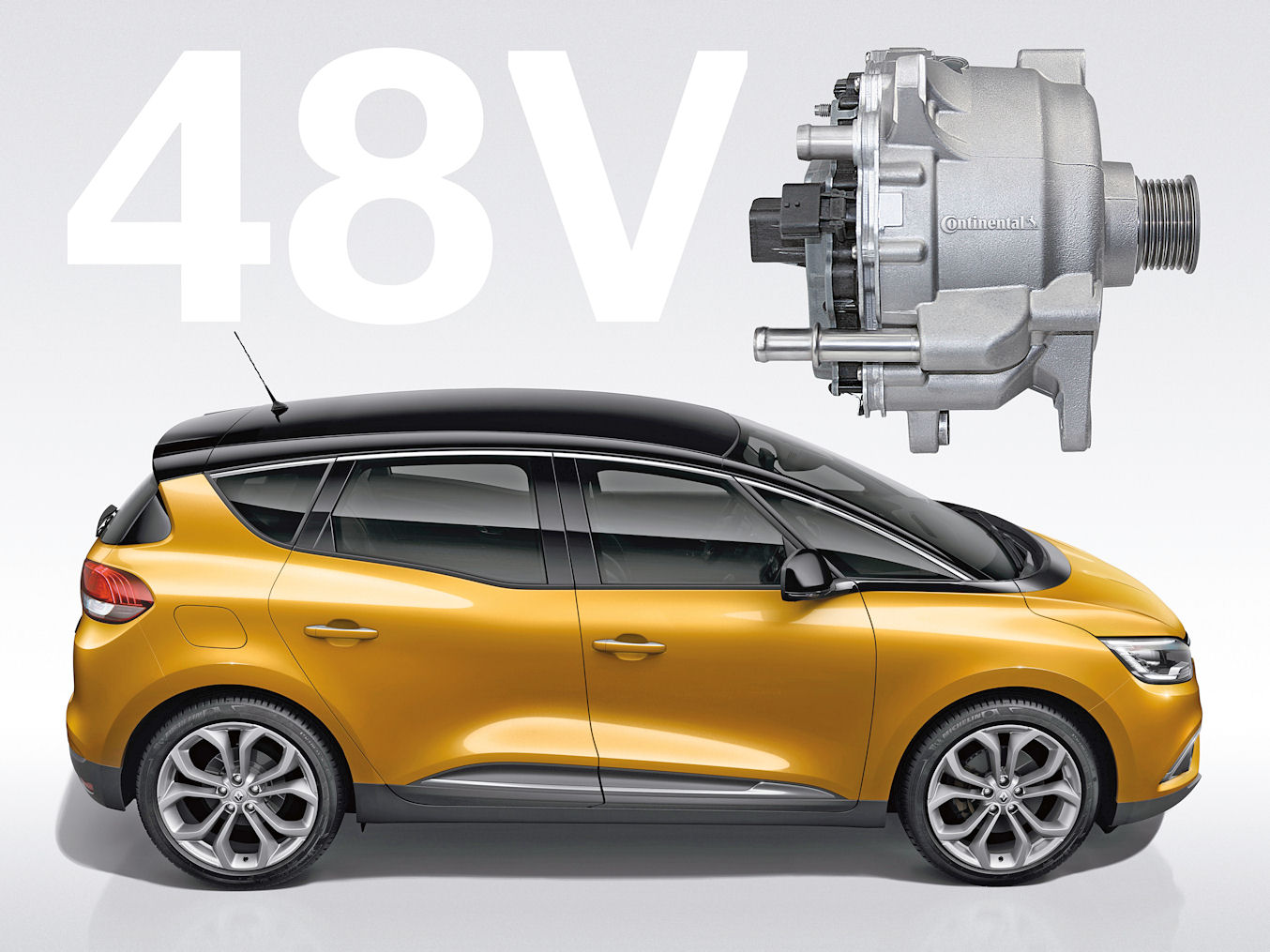Powered by Continental – low-voltage hybrid system introduced
 The 48-volt hybrid drive from Continental is the first of its kind in the world
The 48-volt hybrid drive from Continental is the first of its kind in the world
When not producing tyres, Continental is a major player in the automotive systems sector, and now its products are also providing cars with extra oomph and greater fuel efficiency. The company reports it is “electrifying” one diesel variant of both the new Renault Scénic and Grand Scénic models.
The Continental system, offered as a ‘Hybrid Assist’, uses a 48-volt hybrid drive in production vehicles for the first time. The technology is offered as a cost-efficient means of significantly reducing fuel consumption and exhaust emissions. Instead of a conventional starter generator, the system uses an electric motor with a continuous output of six kilowatts (10kW temporary), which drives the engine’s crankshaft via a belt. The electric motors with integrated inverter are supplied from the Continental Nuremberg plant in Germany, a facility that specialises in complex electronic modules, such as those used for automatic transmissions.
A Continental engineering team has been working together with Renault on a hybrid drive since 2013, and the partners have now delivered a product they say is cost-efficient enough to produce that it can now be considered “an appealing option for mid-size vehicles.” To achieve this, the development partners used low-voltage hybrid technology, which operates at 48 volts. This is in contrast with the considerably more expensive high-voltage technology that operates at between 300 and 400 volts and is usually used in hybrid vehicles. The manufacturer says the 48-volt system facilitates “significant savings” compared with its higher voltage counterpart. Therefore, with the mild-hybrid system, Renault is aiming for combined fuel consumption of 3.5 litres of diesel per 100 kilometres. They are also aiming to reduce the new Scénic´s CO2 emissions to 92 grams per kilometre, a figure that represents a new CO2 benchmark in this vehicle class. Such efficiency is possible because the electric motor, operated as a generator, also converts a large proportion of the vehicle’s braking energy into electricity, which is temporarily stored in a small battery. This electricity can then be specifically used to relieve the internal combustion engine. This is also the reason why nitrogen oxide emissions and exhaust particles, especially in urban traffic, are reduced when a 48-volt drive is combined with a diesel engine.
“We are proud that we were able to secure Renault as the first customer for our innovative 48-volt drive,” said José Avila, Continental Executive Board member responsible for the Powertrain Division. “Other production launches for both diesel and gasoline vehicles are in the pipeline for Europe and other markets including China and North America.” According to Continental, the market for 48-volt drives will grow significantly in the coming years. Rudolf Stark, head of the Hybrid Electric Vehicle Business Unit, comments: “In 2025, approximately one in five new vehicles across the world will be equipped with a 48-volt drive.”
The 48-volt solution from Continental is relatively easy to combine with pre-existing internal combustion engines as it doesn’t require any more room than a conventional starter generator. This is due to the high power-to-size ratio of the electric motor, which does not contain rare earth materials. The high ratio is achieved by water cooling the stator and through the induction motor’s high efficiency. To save space, the inverter, which is needed to convert direct current stored in the battery into alternating current required for operation, is integrated in the housing lid of the motor.
In addition to designing the 48-volt drive for Renault, Continental is also working on other solutions. Electric motors can also be placed between the engine and transmission – allowing, for example, purely electric driving in inner city areas.




Comments